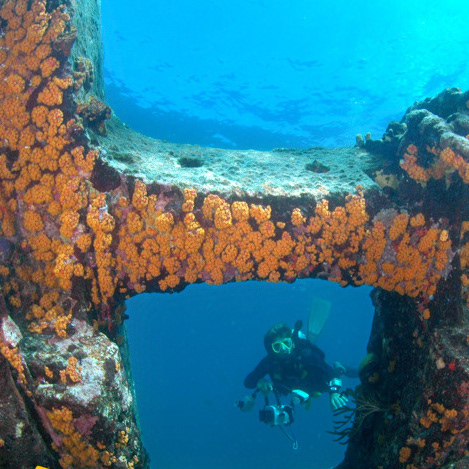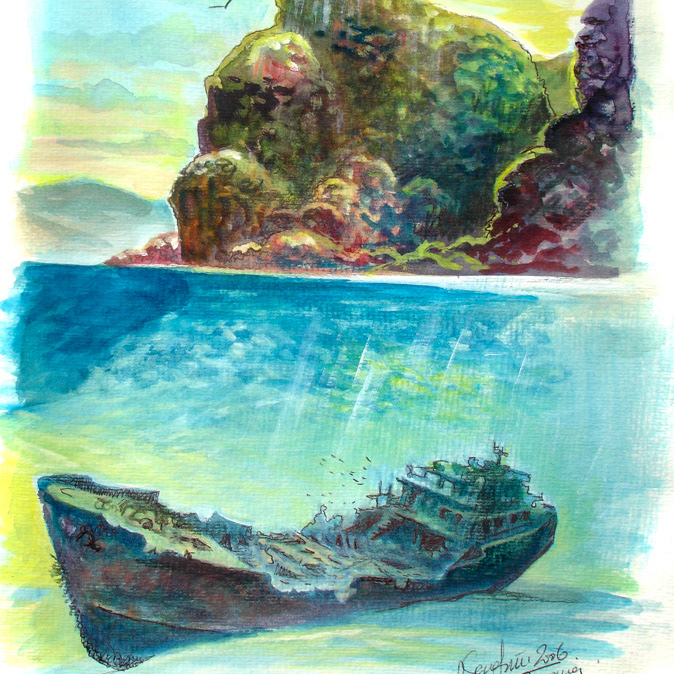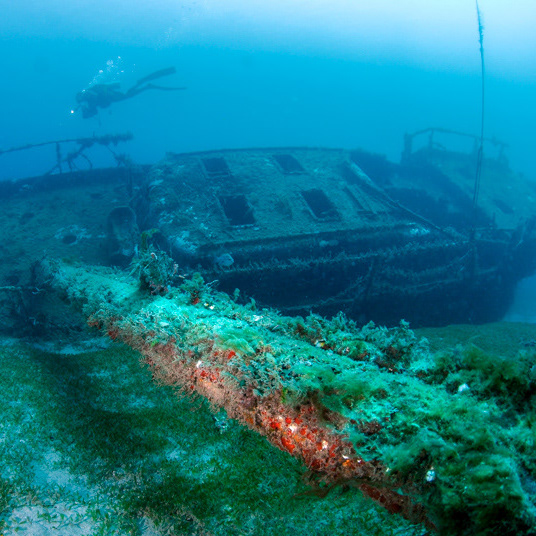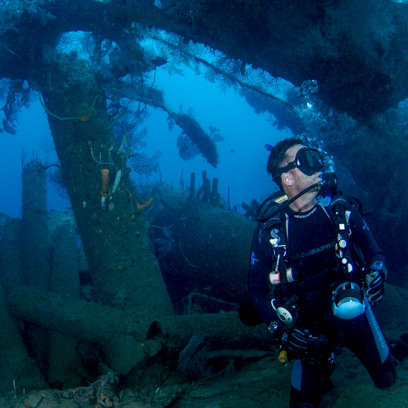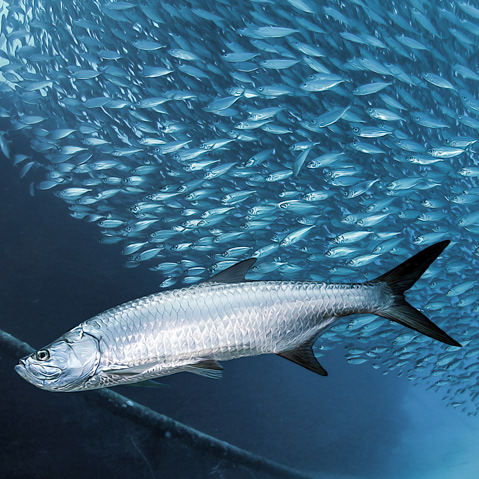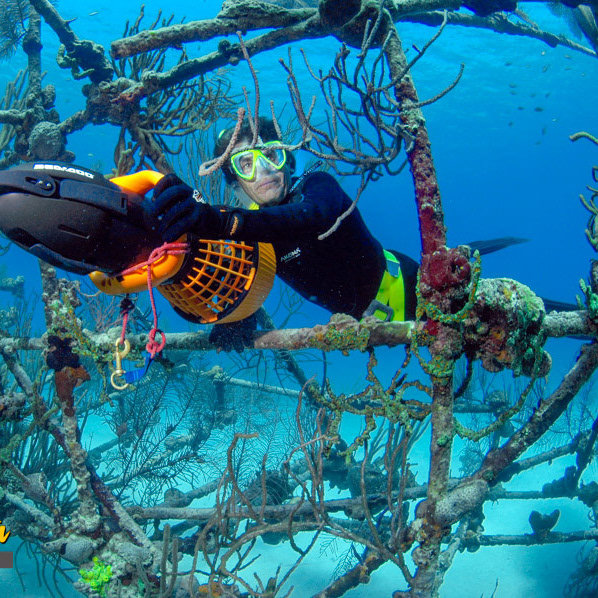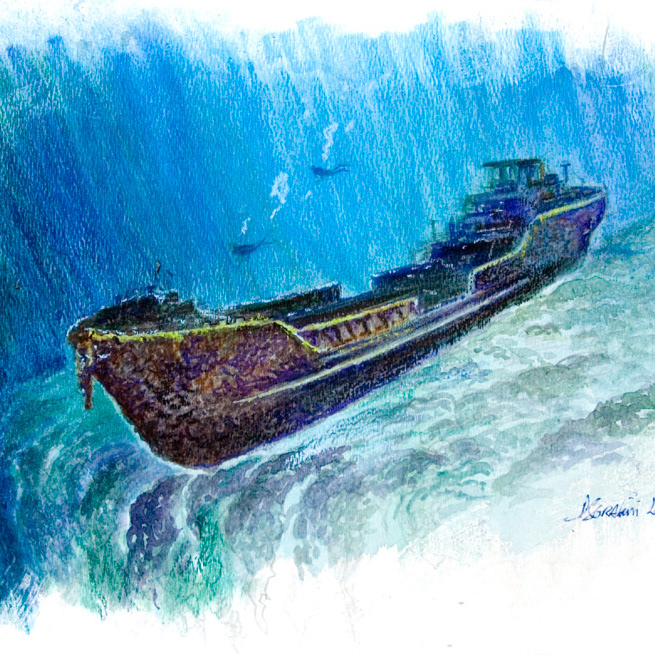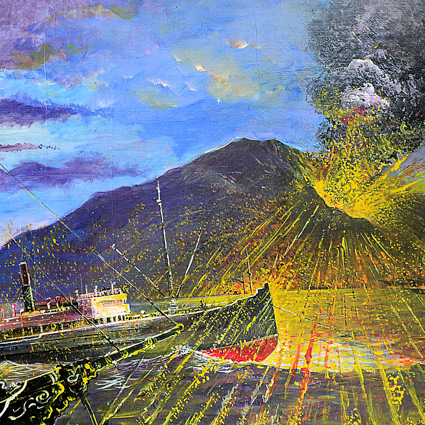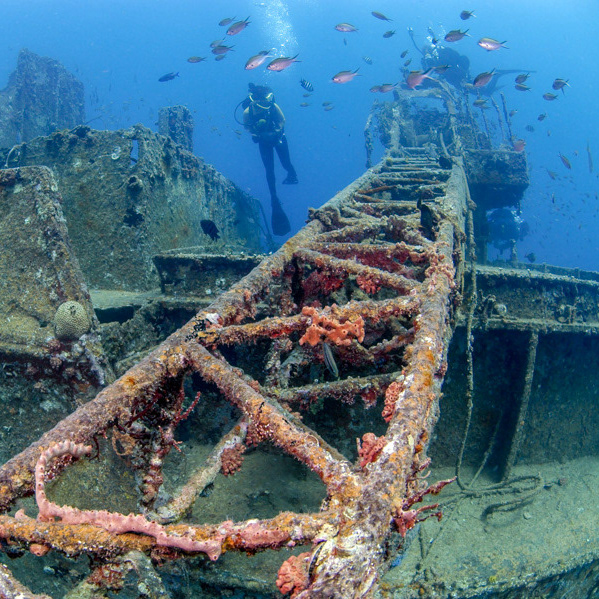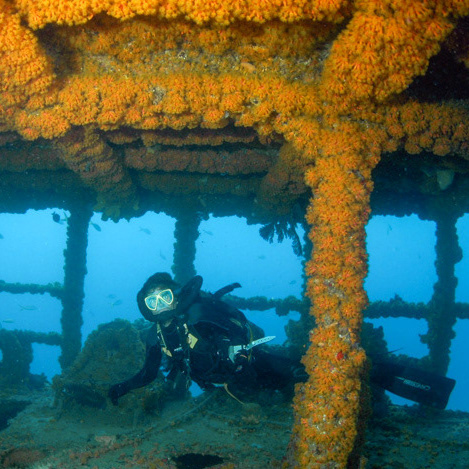The Tamaya, Martinique by Dominique Serafini
On the morning of May 8, 1902, the eruption of the volcano surprised the ships at anchor in the harbor. For several months already, Mont Pelée, which overlooks the bay of Saint-Pierre, was showing its ill-humor. Dull rumblings, noises and sulphurous plumes of vapor disturbed the inhabitants, and the roofs of the town of Saint-Pierre were covered with gray ash. But the commanders of the ships could not imagine the cataclysm that was to strike them at sea.
At eight o'clock in the morning, a series of thunderclaps shook Saint-Pierre. From the flanks of the volcano emerged a fiery cloud, which first rose in the atmosphere, then rolled down the slopes of Mont Pelée. Aboard the ships, the sailors saw the clouds swirling, before falling onto the small town, covering it with a mantle of incandescent ashes. A few minutes later, the ships were surrounded in a tornado of fire. Sails of cotton, rigs of hemp, barrels of rum, of sugar and of molasses burnt first. The vessels, restrained by their anchors, could not escape. The "Roddam", a steamer, was the only boat that managed to cut its line and escape, reaching the open sea and the island of St Lucia. A few hours later, only smoldering wrecks remained in the bay. On board, burnt survivors died agonizing deaths, before the ships sank into oblivion.
It was not until 1960 that the wrecks were spotted by fishermen and explored by the first Martinican divers. Since that time, the site has become a world renowned wreck diving zone. Dozens of sailboats, steamers and tugboats have been discovered and identified by local divers.
The bay was believed to be fully documented by 1980. In that year, Jacques Cousteau's team filmed and photographed the wrecks. Based on a picture taken on the eve of the eruption, there was no trouble finding the wrecks, practically at the same place as they were anchored. Yet a cable boat, the Grappler, was not where they had expected to find it. The Grappler was a great ship that, according to the rumors of the time, was carrying a treasure.
The Tamaya, Martinique by Dominique Serafini
In 1983, a French National Navy boat called "L'entrecastreau", equipped with a magnetometer started searching the bay of Saint Pierre. On the edge of the drop off, they registered a mysterious deep-water echo that would bring back to life the legend of a treasure in the bay of Saint-Pierre, dating back to the 1900s. Was the echo taken by the French navy that of the Grappler - was the wreck finally found?
I, Dominique Serafini, had the privilege of being able to be one of the very first dives on this wreck, captured by the magnetometer. It remains engraved in my memory as one of the most impressive dives of my life. I descended in the blue along thebuoy-line that marked the position of the echo. I descended, crossing the twilight zone of about 235 feet. The dark, jagged silhouette of a long hull lying on starboard, hanging on the edge of a rocky ridge overlooking a vertiginous cliff, appeared to me. No doubt, blown by the tornado of fire, this sailboat had broken its moorings, drifted, and then sunk out of the anchorage zone. Its iron hull was miraculously hanging at the edge of the fall off - a position so inconceivable that the wreckage had eluded all research on the shipwrecks done in the bay to date.
I was struck, and am to this day, by the beauty of the shipwreck.
On my first dive, I quickly drew an overall view of the ship. Once back on shore, I filed a public declaration of the wreck and published the sketch in France Antilles. This triggered a bit of a riot in the Martinique dive community and launched a race to identify the wreck and perhaps find the treasure.
Anyway, the wreck was not the Grappler, but the Nantes three-masted sailboat, the "Tamaya" and the crazy treasure race came to an end. After a decree of the Attorney General of Martinique prohibiting the organization of sport dives on this deep wreck, the calm returned to Saint-Pierre.
This wreck was a treasure. This treasure that had nothing to do with the classic chest filled with jewelry and currency. It was a beautiful and ominous wreck but there is more. The Tamaya's treasure was discovered by François Villecart. A savvy businessman, he launched a rather crazy project: an underwater submarine called Mobilis that visited the wrecks of Saint-Pierre, and most notably, the Tamaya. The Mobilis was a superb submersible built in Germany by the firm Bruker, designed to carry 50 passengers up to 100 meters. At first skeptical and incredulous, the political leaders of Saint-Pierre were seduced by this exceptional project. Several economic partners financed the operation, and the submarine began its trips.
Comfortably seated in front of the circular portholes, tourists were able to discover the main wrecks of the bay of Saint-Pierre during a dive of about an hour: the "Diamond", the "Teresa Lovigo", the "Clementina" , The "Roraima", a 300 foot long steamship, and most importantly, the "Tamaya" at a depth of 285 feet.
The carcasses of the wrecks, burnt by the eruption, took nearly a century to become beautiful underwater oasis.
After just 10 years of submarines and divers, the wrecks were quickly turning back into carcasses. In summer months, the water visibility was poor enough that seeing the wrecks from the submarine was almost impossible. As a result, the submarine approached the wrecks often too closely. These historic shipwrecks were beginning to be damaged and complaints were filed against the submarine - and against the dive shops, who often threw their anchors on the wrecks. As a result, the Mobilis submarine operation was eventually stopped and the Tamaya is once again, a deep wreck, not frequently visited and frozen in time, 285 feet under the sea.
If you are interested in knowing more about the wrecks of Saint-Pierre, in 2014, Dominique Serafini wrote and illustrated the book - Saint-Pierre L'escale Infernale. It's a hard cover band dessinée and it is available for sale on the book's website:

